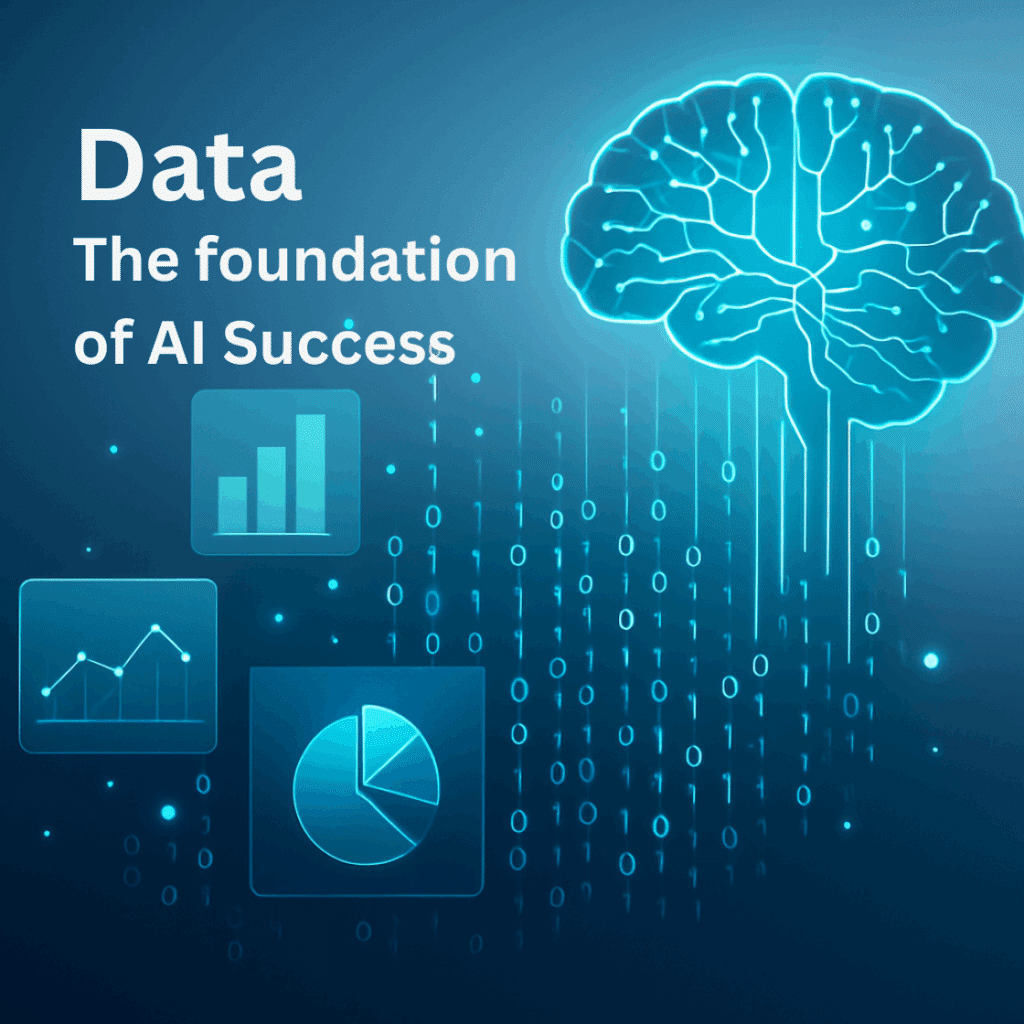
The artificial intelligence revolution isn’t coming, it’s already here. Across boardrooms worldwide, CEOs are issuing urgent memos, fundamentally rethinking their operational models. The writing is on the wall: tomorrow’s successful enterprises will be primarily AI-operated.
This isn’t merely about incremental improvements or bolt-on solutions. We’re witnessing a genuine paradigm shift towards a new operating system that cuts across every aspect of business operations. The question isn’t whether this transformation will happen, but rather: where do you begin?
The Foundation That Everyone Overlooks
While the prospect of AI agents revolutionising roles, streamlining processes, and expanding margins is undeniably exciting, there’s a critical truth that many organisations miss: your data must come first.
Therefore, before you can deploy sophisticated AI systems or implement cutting-edge automation, you need to establish something far more fundamental, a robust data foundation. This isn’t just best practice; it will be the difference between AI success or expensive failure.
Why Data Reigns Supreme in the AI Era
Your organisation’s unique, proprietary data shouldn’t be simply information sitting in databases, it should be one of your most valuable strategic assets. Here’s the crucial insight: if your data is valuable, you’re more likely to survive in the AI era.
AI systems require your data to improve their performance. As they become more sophisticated using your unique datasets, they deliver increasingly powerful results that directly impact your bottom line. By building this solid data foundation now, you’re essentially constructing a “data moat”, a significant strategic advantage that provides resilience even if you’re slower to adopt specific AI technologies.
Your Data Strategy Roadmap
Getting your data house in order isn’t just simply a technical exercise. It’s a fundamental strategic imperative. Here’s your systematic approach:
Phase 1: Discovery and Assessment
Take Stock of Your Data Assets Begin with a comprehensive audit.
- What data does your organisation actually possess?
- Where does it currently reside?
- In what formats is it stored?
This isn’t just about obvious datasets like your CRM. Consider everything from any customer interactions and operational logs to employee communications and process documentation.
Establish Ownership Rights Understanding the legal rights you hold over your identified data is crucial. This involves reviewing contracts, data collection practices, and compliance requirements to ensure you can legitimately leverage these assets for AI applications.
Evaluate AI-Specific Value Perhaps most importantly, assess the potential value of your data specifically within an AI context. Is it unique to your industry or organisation? Does it contain contextual nuances that competitors lack? Does it capture operational knowledge that could inform intelligent automation?
Phase 2: Capture and Quality Assurance
Secure Your Valuable Data Streams If valuable data isn’t currently being systematically captured and secured, address this with genuine urgency. This includes:
- Extracting tacit knowledge from employees’ expertise
- Recording and analysing customer interactions
- Processing internal communications for insights
- Capturing AI experimentation data (the prompts employees use and resulting outputs represent valuable training material for future systems)
Prioritise Data Hygiene and Quality This cannot be overstated: the effectiveness of AI systems depends entirely on the quality and volume of underlying data – “garbage in, garbage out” has never been more relevant.
Establish robust data pipelines that maintain accuracy and enrichment. Consider how roles within your organisation might evolve. Operators increasingly becoming data stewards responsible for quality control and data creation, ensuring high-quality inputs and outputs whilst maintaining data sovereignty.
Ensure Validity and Compliance In an AI-driven world, you may need to demonstrate that your data is authentic rather than synthetic. This might involve implementing data fingerprinting, tracking complete data lifecycles from acquisition through storage to manipulation, and maintaining detailed provenance records.
Building Upon Your Data Foundation
Only once you’ve established this solid data foundation are you truly positioned to leverage AI effectively. The agentic layer, where AI agents perform tasks based on defined workflows and playbooks, requires high-quality, contextual data to function appropriately. Without this foundation, even the most sophisticated AI tools will disappoint.
Your strategic advantage will become clear when new AI frameworks and tools emerge (which they do with remarkable frequency). With your data foundation in place, you can rapidly test and deploy these innovations using real, high-quality datasets rather than hoping for the best with inadequate information. The role of your human team will also need refinement.
The Path Forward
The transition to becoming an AI-first organisation represents a fundamental transformation designed to expand business margins through increased efficiency and scale. However, before you can effectively deploy AI agents to redefine processes and roles, you must begin with your data.
By systematically identifying, capturing, securing, and ensuring the quality of your unique data assets, you build the essential foundation for AI success. More importantly, you create a strategic advantage that positions your organisation not just to survive, but to thrive in the AI era.
The companies that recognise this fundamental truth, that data is the bedrock of AI transformation, will be the ones leading their industries in the years to come. The question is: will yours be amongst them?
If you want to talk more about your company being AI First, Schedule a Call | Call 01603 552696 | Email hello@leadintuition.co.uk
